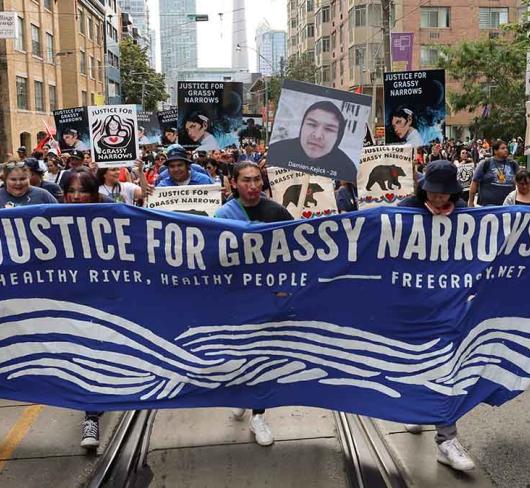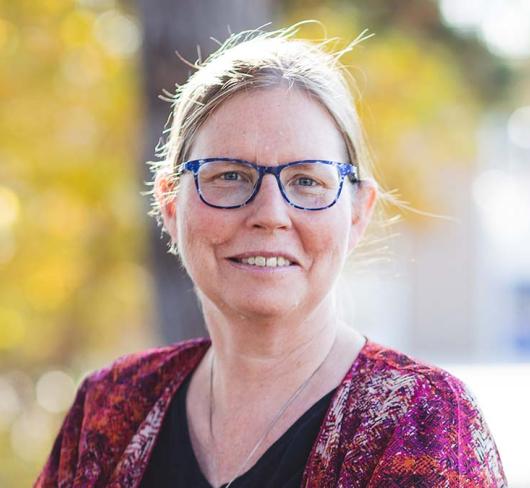
Creating Safe and Inclusive Schools for Gender-Independent Children: an Interview with Dr. Carys Massarella
In February 2012, Dr. Carys Massarella, a transgender rights activist and physician from Hamilton, spoke to the Representative Council about some of the issues facing transgender adults and gender independent children. An expert in transgender issues, Dr. Massarella is one of the few transgender doctors in Canada. She is also a clinical professor, emergency medicine division, at McMaster University, and teaches transgender primary health care to students, residents, and family doctors. Voice caught up with Dr. Massarella this spring.
You recently gave a TEDx Talk at McMaster University under the theme of “Bridges and Barriers.” What was your talk about?
Dr. Carys Masserella: The talk I gave recently at TEDx was about the depathologization of transgender identity. The concept essentially was that for a long time being transgender had been associated with a diagnosis of Gender Identity Disorder and that this was part of the reason that transgender communities had been consistently marginalized and treated poorly by the medical community, in particular. In fact, we have a safe, effective treatment for transgender identity: medically supported transition, which has proven to be effective and humane. This was the essence of my TED talk.
Where do you think we need the most change in relation to transgender issues?
CM: We need change in the perception of transgender identity. We need to understand that gender is not binary but fluid and that transgender identity is not an illness or something need ing to be fixed, but rather part of the rich diversity of human experience. We need to also improve training and understanding of safe and effective treatment for transgender individuals with our health care providers, particularly in medical and nursing schools. Finally, our education systems need to nourish transgender-identified children and adolescents in a supportive environment so as to reduce stigma but also, more importantly, to reduce the real risk of suicide that we see in this community.
At ETFO’s February Representative Council meeting you mentioned that you would always make time to talk to elementary teachers about transgender issues. Why are elementary teachers a particularly important audience?
CM: Gender-independent children are living in our communities. A large part of a child’s life is in school with their peers and teachers. They deserve to have a safe environment to live and learn in, and having support from a teaching faculty, and in particular a homeroom teacher, is tremendously important. We know that these children will do better in a supportive environment where they have the space they need to realize their potential.
How do you define gender-independent children?
CM: Gender-independent children are those children whose gender identity does not necessarily match the biological gender that they were assigned to. They could be the classic “tom boy,” which is an acceptable identity, or they may have a much stronger desire to live in the gender opposite to their assigned biological gender and may indeed insist that they are the gender opposite their biological gender.
What are some specific ways to create a positive and inclusive environment in the classroom and the school?
CM: I think first and foremost that getting across the idea that gender-independent children exist and that they are normal kids is important. They shouldn’t be made to feel ashamed, embarrassed, or afraid to express themselves. There should be books and curriculum that reflect the full experience of gender in our children, including children’s books such as 10,000 Dresses by Marcus Ewert. Classrooms should be positive spaces for children that reflect the diversity of experience. Also, if there is a gender-independent child in a particular school, then maybe that school would have to consider how it manages bathroom policy and which bathroom these kids should use. In terms of advocacy, all teachers should advocate for all students regardless of their background. We need to have inclusive policies that are reflective of the communities we live in. But I think the key is really to reassure school boards and parents that these are normal kids who just need space to express themselves. Many will not end up being transgender and will confirm their assigned biological gender as they get older, but some will be transgender and that’s okay too. It’s just a question of being fair and supportive.
How do socioeconomic factors that intersect with gender identity affect these children’s experiences in school?
CM: Gender-independent children come from all socioeconomic backgrounds. However, as with many predictors, we know that children who come from higher socioeconomic backgrounds tend to have better health outcomes, as their parents are likely better able to advocate for them as compared to some other groups. Parents likely have access to resources, particularly the support of private therapists, which are generally cost-prohibitive.
What similarities and differences do you see between doing work in schools on homophobia and doing work on transphobia?
CM: With respect to the work with homophobia, the two issues are clearly linked. Again, we know that the LGBTQ community has a much higher rate of suicide than non-LGBTQ communities. This is not because of anything inherently pathological about these identities, but is due to the lack of acceptance that leads to shame, anxiety, depression, lack of self-worth, and, in some cases, to the tragic consequence of suicide. Acceptance of diversity is key. Education is key. This should be promoted across school boards, both Catholic and public. The difference is that transgender kids can be gay, queer, straight, or bi, unlike lesbian and gay kids. But in essence the fight is the same and the issues are similar.
What kind of advice would you have for teachers when they are talking to parents about their gender-independent child?
CM: For teachers, I would first say that they should reassure parents that their child is normal and that they have done nothing wrong. This is not an illness or disease that needs to be cured. Let their child have the freedom to express themselves in a safe space and they will come to an understanding of their own identity, as all children ultimately do. Likely their child will not be transgender, but in the end it doesn’t matter because if we offer them support and understanding we will end up with a healthy, happy child regardless of the outcome – which in my opinion, is the most important thing.

